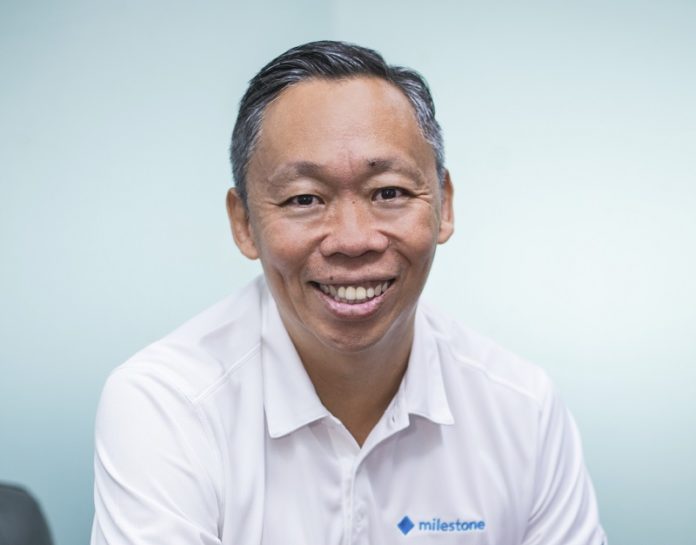Senior Parliamentary Secretary for Home Affairs, Mr. Amrin Amin has called for Singaporeans to stand together, especially in support of our frontline health workers who are serving our nation in this critical time. Beyond receiving our physical and emotional support, what else can be done keep them safe in high-risk environments?
We already see how technology plays a crucial role in keeping our cities safe. Video, combined with technologies such as AI, IoT, and data analytics, ensure that officials get real-time updates that help them make crucial time-sensitive decisions.
Technology has quickly adapted to help keep our heroes safe from the recent COVID-19. Solutions such as AI and Facial Recognition (FR), integrated with video technologies, are increasingly being used to help safeguard frontline staff and the general population.
Video technology has shown itself to be a force for the greater good, especially when it comes to epidemic management.
Safeguarding our borders and preventing escalation
With the increased strain on manpower resources among immigration and security personnel due to COVID-19, it has become challenging to effectively identify infected individuals in crowded high-risk zones such as airports, train stations and immigration checkpoints.
Amidst this manpower crunch, video can be tapped upon as the first line of defence at our borders. Iris and FR scanners at immigration checkpoints, such as those found at Changi Airport Terminal 4, will minimise physical contact via passport-and-thumbprint systems or the traditional face-to-face clearance from an immigration official.
Video systems are also being outfitted with thermal or infrared capabilities and deployed in these high-risk zones to allow immigration/health officials to quickly identify and isolate infected individuals to prevent further spread of the disease. Hospitals such as Singapore General Hospital and Alexandra Hospital have already deployed thermal scanning video solutions as a precautionary measure.
Even better, adding AI to these video technologies provides frontline staff with active assets that can process and assess multiple individuals simultaneously. For example, AI-powered cameras can detect individuals with fevers and alert duty personnel to respond immediately, taking away the need to allocate manpower to conduct physical checks for each passing individual.
Applying further analytics capabilities to such devices can also provide authorities with vital data, such as footfall or the number of detections. Furthermore, connecting these devices to a centralised management platform will allow officials to consolidate data from different locations of deployment, which will aid in forward planning and preparedness.
We are already seeing similar technologies being trialled in Asia. Singapore’s St Andrew’s Community Hospital is currently pilot testing AI enabled video solutions, while China has already implemented such activations in their subway systems to contain further spread of the virus.
Enhanced protection and operational efficiencies for frontline responders
Medical facilities can also employ video technologies to aid in social distancing; minimising contact with infected patients to keep frontline medical staff safe.
With different types of video hardware at their disposal, hospital staff can remotely monitor or study patient behaviour and symptoms in greater clarity and in high definition. These include thermal, infrared and high-resolution cameras, along with a slew of other types of lenses, as well as powerful data storage servers. Capabilities provided by such enhanced hardware offer greater detail and clarity, significantly contributing to hospital operations or medical research processes.
Medical responders can monitor body temperatures of quarantined patients in a non-intrusive manner, picking up the smallest temperature differences in high resolution. This provides a detailed picture of the patient’s body temperature as well as aids in the identification of various viral patterns. This augments the diagnosis and treatment process, whilst minimising contact between medical responders and infected patients.
To add to the benefits, applying analytics to video can be extremely useful for nursing quarantined patients – nurses can be quickly notified if a bed-bound patient needs assistance or if a high-risk patient has had a fall. Video analytics can also be used as powerful tools to determine if a person or object breaks pre-set actions or boundaries within an area; for example, distinguishing movement such as lying down on a bed or sitting on the floor.
Integrating these video technologies and access control systems into a centralised management platform will ease manpower constraints. Healthcare workers will be able to perform mundane tasks remotely such as adjusting the temperature or turning off the lights at individual wards or laboratories, from a safe environment.
The time to act is now
Video technologies act as a shield for frontline personnel by becoming the first point of contact for suspected cases.
These solutions will also be able to take on labour-intensive tasks and leave frontline workers to focus on keeping the population safe, providing quality care for infected patients and work towards curbing the spread of the outbreak.
We’re also seeing the deployment of video technologies across various industries and sectors to keep COVID-19 in-check – school campuses and office buildings have started deploying video systems equipped with thermal imaging capabilities to ensure the safety of its occupants and visitors. Such systems can also be an interim solution for the MICE industry, amidst current circumstances.
Acting as a two-pronged solution, video technologies can be a practical and effective solution in helping contain further spread of the virus – providing an additional layer of defence as well as relieving manpower constraints.
Governments and healthcare organisations should explore how these technologies can be integrated into video management systems and look at how it can bolster our containment strategies. When it comes to keeping our cities safe, the possibilities that video offers for frontline defence are limitless.
















